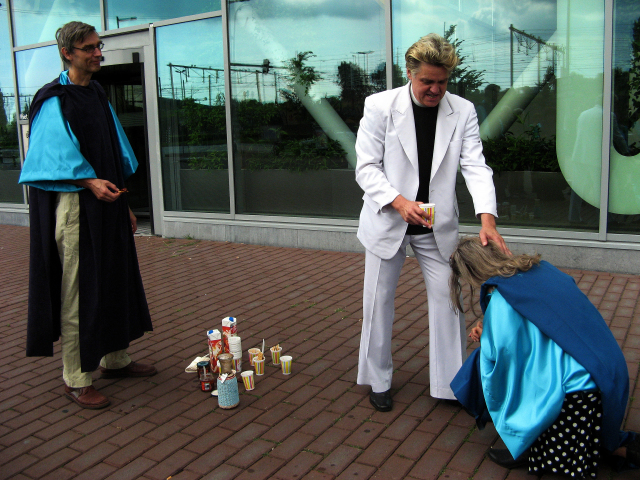

This cuts down my prep time considerably, and I always know I have that important holy trinity in my freezer ready and waiting to be used. One tip I learned from experience was to always keep some chopped soffritto in my freezer for when I felt the urge to cook. Purists would say you must use a mezzaluna, which is a crescent shaped knife that fits into a rounded wooden board to chop your soffritto, but really any sharp chef’s knife works just fine. At times, other ingredients are also included into the primary three vegetables and these could include parsley, leeks, garlic, chopped pancetta, or other fresh, chopped herbs. Soffritto is the Italian word for “under-fried” or “fried slowly” and perfectly describes the process of gently cooking the vegetables in oil to soften them and release their flavor.

These vegetables are cooked for about 5 minutes until they soften and become “dorata” or golden in color, at which time other ingredients are added such as rice, meat, broth, tomatoes etc. In most of Italy this soffritto is gently sauteed in olive oil, although in some northern Italian regions such as Lombardy or Veneto, butter may be used as well.Īlthough some may debate that the holy trinity of Italian cuisine is really tomato, garlic, and basil, most do agree that the vegetable combination, or soffritto is more commonly used as the flavor base for many dishes. In Italian cuisine, this holy trinity is also called a “soffritto”, “odori”, or “battuto” and usually include onions, celery, and carrots in a 2:1:1 ratio which in france is called mirepoix. These ingredients are usually cooked in either butter or olive oil to release their flavors and are used commonly when creating soups, sauces, stews, or braises. In a 1995 catalogue essay to accompany the major survey of Peryer’s work – Second Nature, Peter Weiermair commented: “Peryer’s intention is to create a few compelling archetypal images that go beyond the careless verbosity of contemporary photography – to create photographs as complex as good poems, which can be read again and always differently.NovemSoffritto ~ The Holy Trinity of Italian CuisineĪ holy trinity in cooking is simply a combination of three aromatic ingredients, whether they are vegetables, herbs or spices, that are gently sauteed together to provide a flavor base for other ingredients to build upon. Although there are no portraits in the exhibition, his considered eye manages to give each of his images a distinctive personality. He would often return, or revisit, subjects as a way of processing and percolating over long periods of time.įamilies of photographs were something that Peryer often discussed in his practice and this exhibition is testament to that – the images nod and stretch toward each other. His output was constant but not prolific. Peryer came to photography at the age of 32, late in comparison with other photographers. With the addition of these works the Sarjeant has one of the most comprehensive collections of Peryer’s photographic practice in a public gallery. This exhibition features works created between 20, which were acquired by the Gallery in 2021 with generous assistance from his estate. Like other significant New Zealand photographers such as Laurence Aberhart, Anne Noble and Wayne Barrar the Sarjeant’s ongoing friendship with Peryer was initiated and fostered by the Gallery’s former Director – Bill Milbank.


The 2006 photograph was taken by Peter Peryer (b.1941, d.2018) and is just one of the 180 works that the Sarjeant Gallery has in its care. With the addition of these works the Sarjeant has one of the most comprehensive collections of Peryer’s photographic practice in a public gallery.Ī bright red tomato positioned carefully on a carved wooden foot – curious subject matter for a photograph and perhaps made even more enigmatic by its title Holy Tomato. This exhibition, titled after one of Peter Peryer’s photographs Holy Tomato (2006) is just one of over 150 works the Sarjeant Gallery has in its collection.


 0 kommentar(er)
0 kommentar(er)
